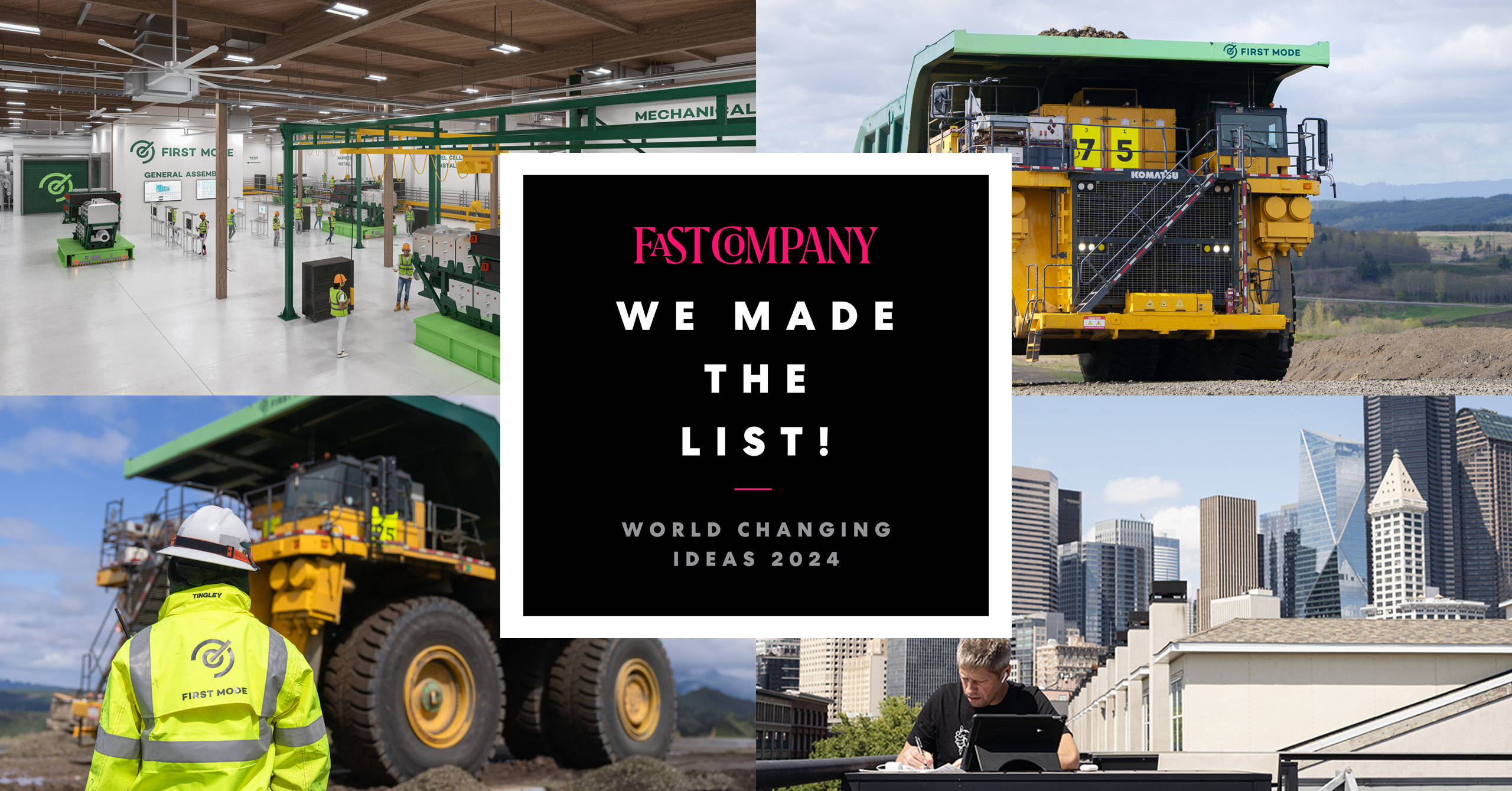Header image source: Institution of Civil Engineers
Hydrogen is a clean-burning zero-carbon fuel. A kilogram of hydrogen contains more than twice the energy of a kilogram of gasoline, diesel, or natural gas. Hydrogen fuel cells and hydrogen-burning gas turbines are already available. So why don’t we have a hydrogen economy already? Is it all just hype?
It is not! We don’t yet have a hydrogen economy because:
- Elemental hydrogen is scarce.
- The cheapest way to make hydrogen also makes lots of carbon dioxide.
- Carbon dioxide emissions are not yet priced.
- Hydrogen fuel cells and gas turbines still need work.
- Hydrogen handling is hard.
This article discusses these five problems, outlines some emerging solutions, and concludes with a couple of recommended priorities.
Problems
1. Elemental hydrogen is scarce. On Earth, hydrogen is mostly found combined with other elements. While there have been some intriguing recent discoveries of natural hydrogen sources, these are unlikely ever to meet more than a minuscule fraction of demand. In general, it is necessary to apply energy to extract hydrogen from some other substance, such as water, oil, coal, or methane.
2. The cheapest way to make hydrogen also makes lots of carbon dioxide. There are many ways to extract hydrogen, but the cheapest and therefore most common one — steam methane reforming — produces enormous amounts of CO2. While this “dirty” hydrogen is not yet widely used as a fuel, its use in industrial processes is widespread, in particular as a key ingredient in the tens of millions of tons of ammonia-based fertilizers produced annually. Without these fertilizers, global food production would collapse. (In this sense, we already have a hydrogen economy.) Cleaning up existing hydrogen production without increasing its cost, and finding ways to cleanly and cheaply produce hydrogen for fuel, are both essential to climate mitigation.
3. Carbon dioxide emissions are not yet priced. Carbon dioxide emissions are costing the world a great deal, but those who produce them pay nothing. This is the other main reason, besides the lack of large-scale deployments of clean hydrogen technologies, that clean hydrogen is more expensive than dirty hydrogen. Prospects for carbon pricing are uncertain, so we need to find ways to make clean hydrogen economically competitive even in the absence of a fair price for carbon.
On the other hand, if carbon dioxide does get properly priced, early adopters of clean hydrogen technologies will gain a huge economic advantage. This can provide a major motivation for experimentation and risk-taking in this area.
4. Hydrogen fuel cells and gas turbines still need work. Fuel cells and gas turbines are the two principal means of turning hydrogen fuel back into energy. A hydrogen fuel cell is a battery-like device that turns hydrogen and oxygen directly into electricity, with water as a byproduct. A gas turbine is a machine that turns fuel and oxygen into the kinetic energy of exhaust gases and a rotating shaft; the kinetic energy then drives another machine, like an electrical generator or an airplane (a jet engine is one type of gas turbine). Fuel cells and gas turbines come in a wide range of sizes — fuel cells can power golf carts or skyscrapers; gas turbines can power helicopters or cities.
For hydrogen fuel cells, there is considerable room for improvement in the areas of cost, efficiency, and durability. For hydrogen gas turbines, the remaining issues are more narrowly focused on durability — while gas turbines are an extremely well-established technology, hydrogen burns hotter than the methane or kerosene with which they are usually fueled. Controlling nitrogen oxide emissions is also a concern.
5. Hydrogen handling is hard. While manufacturers of fuel cells and gas turbines are well on the way to solving the problems involved in turning hydrogen into energy, there are also numerous problems involved in delivering the hydrogen to these devices. You need very high pressure to compress the gas, or very low temperatures to turn it into a liquid. Even in liquid form, hydrogen takes up a lot of space. Also, because molecules of hydrogen (element number one on the periodic table) are even tinier than other molecules, you need extremely tight seals to prevent leaks — and you really want to prevent leaks, because hydrogen, like gasoline and natural gas, is both valuable and flammable.
Approaches to Solutions
1. Elemental hydrogen is scarce, so make more of it. Keep prospecting for natural hydrogen, but don’t expect too much.
2. The cheapest way to make hydrogen also makes lots of carbon dioxide, so experiment widely with ways to make clean hydrogen cheap. There are many approaches to making clean hydrogen; here are brief descriptions of three of the most promising.
Water electrolysis uses electricity to split water into oxygen and hydrogen. An electrolyzer is a fuel cell in reverse: where the fuel cell turns hydrogen and oxygen into electricity and water, the electrolyzer turns electricity and water into hydrogen and oxygen. Electrolyzers are mature commercial technologies, as are zero-carbon nuclear, hydroelectric, wind, and solar generation of electricity. Intermittency is a problem with wind and solar, but this can be addressed by battery storage at the plant or utility level, and by diversification at the utility level.
A variation of water electrolysis is high-temperature electrolysis. Instead of electricity and water, the inputs to this process are electricity and superheated steam. High-temperature electrolysis is significantly more efficient than conventional electrolysis. The downside is that you need advanced solid oxide electrolyzers — which today are short-lived and expensive — as well as a large array of solar mirrors or a nuclear reactor to produce the high temperatures.
Methane pyrolysis uses electricity to create very high temperatures to separate methane into elemental hydrogen and elemental carbon; no carbon dioxide is created. The outputs of this process are therefore clean-burning fuel and a valuable industrial input (e.g., for building materials), instead of clean-burning fuel plus greenhouse gases.
3. Carbon dioxide emissions are not yet priced, so market clean hydrogen as a hedge. Keep campaigning for workable carbon taxes or cap-and-trade schemes, but again, keep expectations low. Carbon pricing is politically very difficult. Between the technologies described above, the instability of natural gas prices, the “green premium” that some hydrogen buyers are willing to pay, and the need for companies to have a hedge against (what is from their standpoint) the risk of carbon pricing, a tight focus on driving down prices is a much more promising approach.
4. Hydrogen fuel cells and gas turbines still need work, so patiently refine. There are no theoretical reasons why these devices cannot become just as durable, efficient, and cost-effective as the hydrocarbon-burning machines they will replace. Hydrogen fuel cells have been used to power buses, trains, and submarines; gas turbines that can burn a mix of methane and hydrogen are already widespread. Bringing these technologies to full maturity is now a matter of engineering tweaks, trial and error, and the marketplace demand needed to drive them.
5. Hydrogen handling is hard, so again, patiently refine. Here the problems are mundane, largely having to do with plumbing and tankage. These problems have already been solved for some applications — tens of thousands of hydrogen fuel cell forklifts are in operation, and the safe handling of hydrogen is routine in heavy-industrial environments. Combining hydrogen with nitrogen to store it as ammonia is also a good solution for some applications. Nevertheless, it will be difficult to solve the problems of hydrogen handling over the range of applications required for a full-fledged hydrogen economy. Large-scale real-world experimentation, deployment, gathering of experience, and drawing of lessons is needed.
Summary and Priorities
We must improve the supply of cheap clean hydrogen. What’s needed above all is large-scale deployment of already-available technologies for producing clean hydrogen. We need to try out multiple combinations of energy sources such as wind, photovoltaics, and concentrated solar power, with hydrogen production technologies such as electrolysis and pyrolysis. We need to take the most promising experiments and see which ones work best on an industrial scale. Many efforts are underway, for example Palo Verde’s conventional electrolysis project, the Heliogen/Bloom high-temperature electrolysis project, and Monolith’s methane pyrolysis plant.
We must increase the demand for cheap clean hydrogen. Robust field experimentation with applications of hydrogen fuel will not only drive solutions to the pressing problems of hydrogen storage and distribution, but will also expand the market for hydrogen fuel cells and gas turbines, thereby driving further improvement of these devices. A few examples of the many efforts in this area: the Airbus ZEROe program, Anglo American’s hydrogen-fueled haul truck, and hydrogen-fueled powerplant projects from Mitsubishi and GE.
We can’t conserve or legislate our way out of the climate crisis, but we can engineer and manufacture our way out. On both the supply side and the demand side, much of what needs to be built is clearly possible, and all of it is at least barely possible. First Mode looks forward to doing its part.
Want to work with us? We’re hiring! First Mode builds the barely possible to enable a sustainable future for everyone, everywhere. Check out our open positions in Seattle and Perth.




